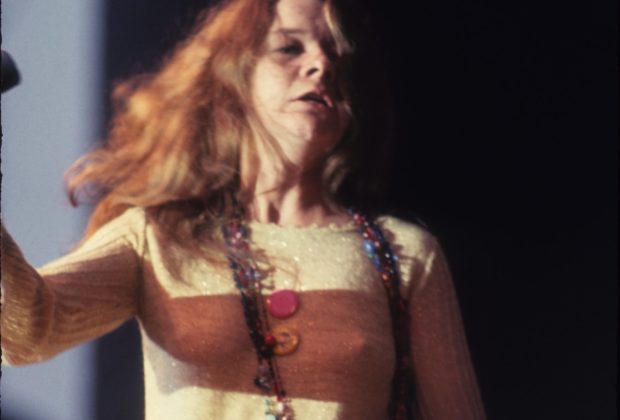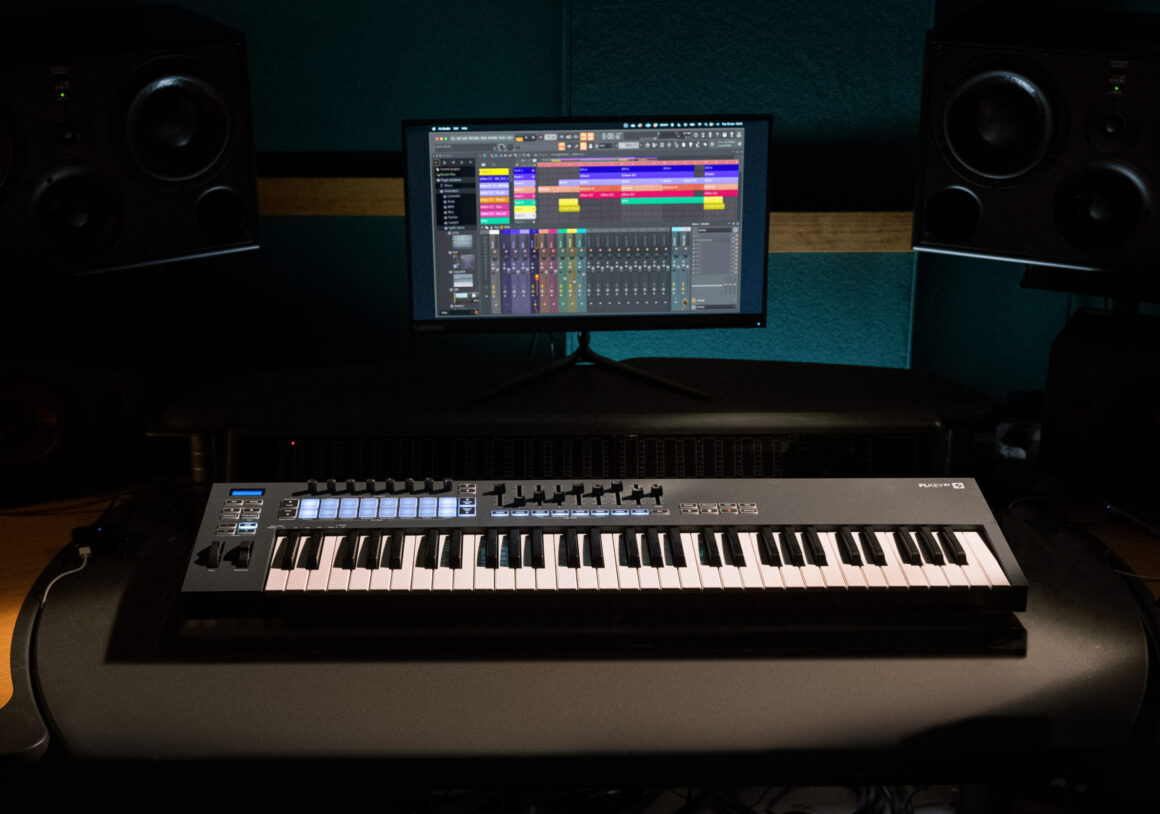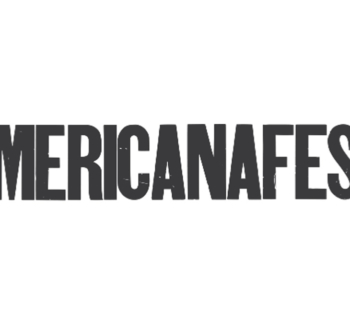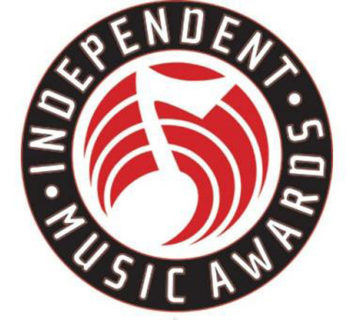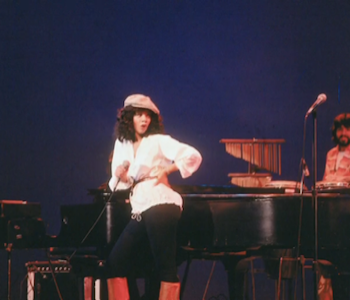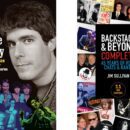The Monterey International Pop Festival was held on June 16-17-18, 1967, in Monterey, California.
Record producer and Ode Records owner Lou Adler, along with songwriter John Phillips of the Mamas and the Papas presented thirty-two music acts from the United States and England that weekend of contemporary pop, rock, soul, psychedelia, folk, and blues.
Appearing were the Association, Johnny Rivers, Simon & Garfunkel, the Blues Project, Buffalo Springfield, Big Brother & the Holding Company, Jefferson Airplane, Laura Nyro, Ravi Shankar, Grateful Dead, Mike Bloomfield’s Electric Flag, Moby Grape, Lou Rawls, Booker T. and the MG’s with the Bar-Kays, the Who, Eric Burdon and the Animals, Paul Butterfield Blues Band, Beverly, the Group With No Name, the Byrds, Otis Redding, Al Kooper, Canned Heat, Country Joe and the Fish, Quicksilver Messenger Service, the Jimi Hendrix Experience, the Mamas and the Papas, Hugh Masekela, Steve Miller Band, and Scott McKenzie.
The ongoing impact and influence of the June ’67 world of Monterey on outdoor music festival culture extended far beyond the actual gathering that epic weekend. It helped create and stock your record and video/DVD collection the last half century. The musical, logistical, sociopolitical, and record business machinations from that galvanizing event in Monterey celebrates a 56th anniversary in mid-June.
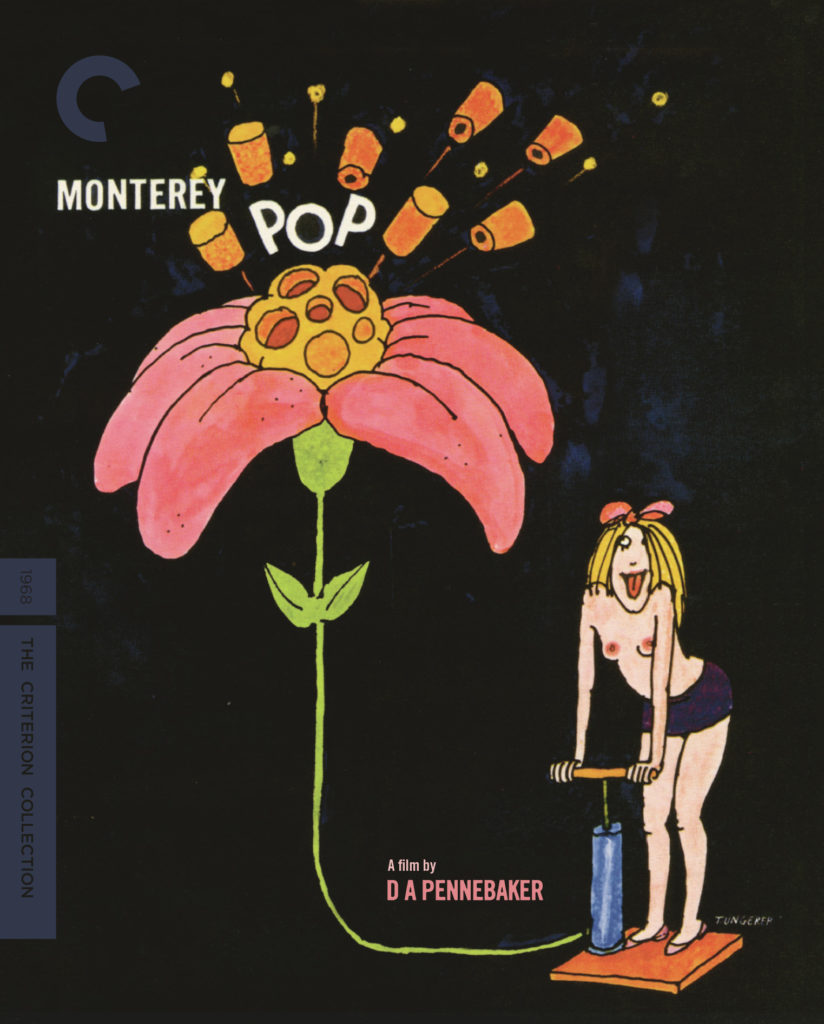
“Monterey,” posed poet and deejay, Dr. James Cushing, “we all accept it as the ‘first rock festival,’ but in some ways, it was the last -- in the sense that it was truly festive, with that festive pastoral spirit that puts feeling first, profit last. All the people were festive, and nobody got hurt. All the big festivals that followed were variations on controlled disaster, like Woodstock or the Isle of Wight, or uncontrolled, in the cases of Altamont or the Isle of Fehmarn.
“To see the Monterey Pop 1967 film footage today is to be forced to contemplate how fragile the scene was, how vulnerable the artists, how small a window they had.”
“Monterey was a watershed moment for something very big, more than rock music, entertainment, or even culture,” emphasized writer Daniel Weizmann.
“It was the tipping point for a new kind of consciousness. I believe the Shechinah was in the air in California in those years, the ‘dwelling place’ of divine energy, it’s feminine aspect according to Kabbalah, and so many elements of everyday life were evolving at a rate nobody could keep track of. The music was incredible but the music was more than electric sound, more than stimulation. It was a delivery system for a new feeling about living, a new way of being really. Dig it—these people, on the stage and in the audience, were children of the soldiers that stopped Hitler, this was ‘the love crowd,’ like Otis says. It was no accident, no coincidence. They were saying ‘We have a better way. We have the antidote.’”
"Although in an even more perfect world the Beach Boys would have been closing out closing night with the World Debut performance of SMiLE," wishes musician and writer Gary Pig Gold, "those three days at Monterey nevertheless went countless, mud-free miles further to legitimize, for lack of a more worthy Badge of Honour, pop music's rightful place within the pantheon than that weekend on Yasgur's cow fields ever did.
“Yes, Janis broke through; but so did Otis, Jimi, and the Who to wider, whiter audiences at large, while Byrd Crosby put his theories regarding JFK's murder smack dab on celluloid almost a quarter century before Oliver Stone ever dared... although, of course, that all went unseen and unheard at the time. Meanwhile those Paupers proudly represented O Canada, Ravi Shankar likewise the other side of the globe, Micky Dolenz somehow upstaged Brian Jones in the Wardrobe dept. and the entire Summer of Love never ever shone, or sounded, brighter or better. Why, even the cops grooved with us!”
“Monterey was a beacon of light and hope,” volunteered author Jan Alan Henderson. “Young, new, and innocent, an experiment never before tried. 30 months later, also in Northern California, that light was extinguished at Altamont Speedway. Do we move forward by coming from?”
“Monterey was the wedding, Woodstock the divorce…And Altamont the funeral,” suggested music journalist Matthew Greenwald.
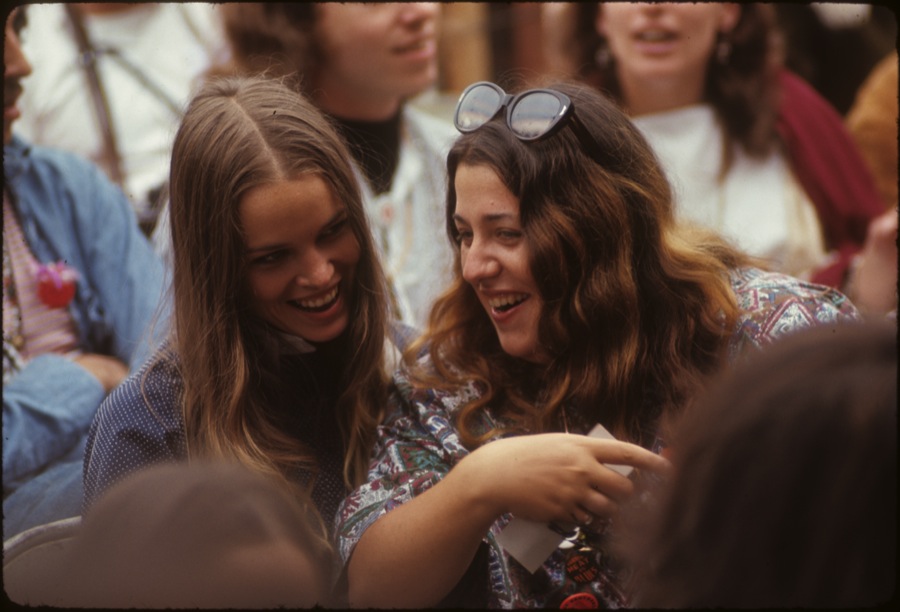
In June 1969 the documentary Monterey Pop by filmmaker D.A. Pennebaker was released theartrically, premiering at the Fine-Arts Theater in Beverly Hills. I went to the first screening.
Lou Adler: John and I hired D.A. Pennebaker who had done Bob Dylan’s Dont Look Back. We shot it initially as a TV show, because ABC-TV had given us the money up front. It was originally commissioned as the very first ABC Movie of the Week. After looking at the footage from Monterey, I remember thinking; it's too much for television.
When we met with Tom Moore, the President of ABC-TV, we didn’t show him The Association, we showed him Hendrix. It didn't take him long to say “Take it back. Not on my network.” This turned out to be a blessing. We were able to keep the money that was paid so far and Monterey Pop became a film.
The brilliance of Pennebaker, with his 9 cameramen, is that he was able to capture what happened, not make it better…not make it worse; really show what happened, the raw emotion. If it's Hendrix or the Who, he goes to the right person in the audience; you get the feeling the audience was feeling. To me, what I get when I watch the film are my memories of what really happened those three days.
D.A. Pennebaker: Bob Rafelson, director of The Monkees TV show called me up and he said “would you like to do a film of a concert in California?” And I thought about it and I had just seen Bruce Brown’s Endless Summer, which is not about surfing at all, but all about California. Every kid out of high school the one thing they wanted to do was get to California, and Endless Summer didn’t hurt.
I saw Rafelson once, maybe, but he was never involved. It was always Lou Adler and John Phillips that I dealt with. And we flew up with Cass (Elliot) to see the place and I looked at it and it was this tiny place. I had no idea what was going to happen there. I had never seen a music festival at all. Not even Newport, so I didn’t know what to expect.
It had a really nice feeling to it and I loved Monterey and it’s a lovely place. And I sort of thought, “well these guys John and Lou know what they are doing.”
John was a total genius. He was part Indian and had a mystical view on everything he did. And he hadn’t been playing music for long. The Journeymen a couple of years before the Mamas and Papas. Everything he was doing was like he’d been touched and as long as the spell was there it just flowed out of him. I loved John. He was marvelous.
Lou knew what he was doing and I knew he was a real good sound mixer ‘cause I had listened to some of the stuff he had done. But I knew they were hatching a real interesting game. Which was from the beginning get rid of the money. That was the big thing. Get rid of the money. And I could see that was gonna make it work. It was a very Zen thing.
In the Monterey Pop original movie interviews didn’t interest me and I had access to do it. I didn’t want to take the time. I wanted everybody to concentrate on music. Well remember: the guys I had filming for me there, except for Ricky (Leacock), he was the only other camera, they were all beginners. And I wanted them as I put them in pivotal positions ‘cause they could be with the music. They served the music and that was the thing. And I didn’t want them to think about anything except getting film to match that music.
I knew when I saw Ravi Shankar, we would have to end with that. I remember sitting down at Max’s Kansas City and I wrote out a little thing on the back of a menu of what I thought the order of the music would be and you know it was very close to what ended up being. The only thing I pulled out were Paul Butterfield and the Electric Flag for very peculiar reasons. But the fact is that I almost knew going in without even thinking about it that it had to build from Canned Heat to Simon and Garfunkel to whatever it was, it had to be a history of popular music in some weird way that I didn’t ever have to explain to anybody, ‘cause I had John’s music as a narration for the whole film so that just covered me.
We had Brian Wilson’s tape recorder, that was one thing that made it possible. Those two eight tracks made it possible and Lou and John mixed that thing in John’s house while I sat there and listened to it and they did a fantastic mix. They were really good at doing mixes.
Otis Redding was stunning. He had a pretty good band. I was editing, or re-editing the section of his for Monterey Pop in late ’67 and changed the film a little bit when he went into the lake [on December 10, 1967 in Monona, Wisconsin].
I remember that’s when I got in to all that stuff of doing things with the lights and I know at the time I felt, “Gee. What am I doing? This is crazy.” But I left it that way because I felt so bad that he kind of died on us and that made me sad. So, it was the only thing I could do to mark that was to edit that way. In editing Monterey Pop, I had my first Steenbeck.
When I showed Hendrix to ABC they said “no thanks.” And they owned the film and all they had to do was sign some shit and they would have taken it free, but they let it go because they knew he couldn’t play on their network.
In 2002, The Criterion Collection released D.A. Pennebaker’s The Complete Monterey Pop Festival DVD collection, an expanded edition from his original Monterey Pop movie. The 2002 retail configuration incorporated two hours of never seen performamnces. The 16-bit 4K digital restoration was supervised by Pennebaker, with uncompressed stereo soundtrack. Producer Kim Hendrickson also conducted a new interview with Adler and Pennebaker looking back at the monumental moment. Another bonus inclusion is a 20-minute short film by Ricky Leacock, Chiefs, that was programmed with Monterey Pop during the first 1969 theatrical run.

“The Monterey Pop [2002] DVD has newly re-mixed audio and film footage and an interview,” stressed Pennebakr. “I think it’s added something quite interesting to our films. It’s like listening to radio shows. It gives us a place to dump stuff, that’s essentially valuable, but we don’t know how to put it to film. So, you feel, ‘well, at least it’s a drawer.’ You can close it and think it’s safe. The picture is better than video. We do a lot of work on these DVD’s, especially on Monterey Pop. We went back to original sound, and re-mixed things with the 5.1 Dolby sound for the DVD player.”
In 2021 I penned the liner notes to Big Brother & the Holding Company Captured Live at The Monterey International Pop Festival distributed by The Orchard andissued for National Record Store Day Black Friday last November.
During 2017, I wrote 1967 A Complete Rock Music History of the Summer of Love, published by Sterling/Barnes and Noble.
1967: A Complete Rock Music History of the Summer ...
Hendrickson also conducted a new interview with Adler and Pennebake looking back over the last 50 years. Another bonus inclusion is
My brother Kenneth and I in 2012 collaborated on A Perfect Haze The Illustrated History of the Monterey International Pop Festival, published by Santa Monica Press.
Over the last 48 years I’ve conducted over 100 hundred interviews with Monterey International Pop Festival participants and attendees and personally transcribed them…
Clive Davis (Columbia Records Executive): Oh, my goodness, it’ still many years ago but vivd in memory. I was seeing music change, but I was waiting for the A&R staff to lead into these changes that were showing evidence in becoming important in music. So, when I really came to Monterey not knowing what to expect, but seeing a revolution before my eyes that became evident as artist, known or unknown, too the stage. I realized in effect, without it sounding cliche, it became very clear, whether it was an epithiny, whatever. Because it was the electrification and amplification of the guitar. Simon & Garfunkel were folk. All of a sudden seeing (Jimi) Hendrix, Janis Joplin and Big Brother and the Holding Company, and the Electric Flag, and the artists that were there, there no was no question that the predominance there was a change in contemporary music. A definite hardening, edgier, rockier amplification that was taking place that truly was signaling a major revolution in rock music.
I had no idea what awaited me. I had no knowledge of what was going on in San Francisco, for example. So, I really was going with my wife to spend a three-day weekend enjoying I think the first pop music festival. And going to do it with Abe Somer and Lou Adler. When I saw the crowd, it was visually stunning, the dress and the attitude.
When Janis (Joplin) took the stage, it was an unknown group to me totally, Big Brother & the Holding Company, and right from the outset it was something you could never forget. She took the stage, dominated, and was absolutely breathtaking, hypnotic, compelling and soul shaking. You saw someone who was not only the goods but was doing something that no one else was doing. With that fervor, that intensity, and impact, So yes, that in effect, coupled with everything around me, the way people were dressing, what was going on in Haight Ashbury, the spirit in the air, and the feeling.
I just said, ‘You know, I am here at a very unique time. I’m feeling it. I’m feeling it in my spine.’ I’m feeling it in my sense of excitement. I’m feeling it in the impact, it’s not only musical changes, but in society changes, and I in effect said, ‘this is really, although it sounds hokey or cliche, this is the time that must mean that I’m gonna have to make my move.’
There’s no question that the primary signing was Big Brother and Janis Joplin, but the Electric Flag was very powerful with Buddy Miles on drums, and Mike Bloomfield on guitar. Laura Nyro was not great at Monterey and I didn’t come away with the feeling I must sign here then. I was aware of her through Monterey, and subsequently came to know of her more particularly through David Geffen, who managed her and when she came to my office to play her material and her songs, it really was the listening of her songs that overcame what had been a negative in person at Monterey.
Monterey was very different and unique. The success of the artists I signed at Monterey gave me confidence that I had good ears. It was there’s no question I was going to get confidence from nothing else. I mean, basically, that was a move I had made, and the fact that they came through in a resounding way, and were critically welcomed as well as commercially they reverberated, there’s no question that the streak that I was in with each of them making its mark in an important way lead me imperically ‘cause I had no idea I had ‘ears.’
I had no idea that I could do this. It never occurred to me that I would be doing it, and so that as each step came through it embolded me and gave me the confidence to trust my own instincts. And, that’s the only way that I’ve ever done it. Because obviously up until that time my background was totally different and it was a talent that I never knew I had. And as each came through it embolded me that I this was something that I not only loved doing but I had a talent for. Monterey is a without question probably the most vivid memory from a career point of view, from an emotional point of view from a character effecting point of view that I’ve ever had.
Jac Holzman (Founder/President Elektra Records): I went to the 1967 Monterey International Pop Festival. I didn’t sign anything. I had expected the Doors to be invited but they weren’t. But they pissed off everybody anyway because their song ‘Light My Fire’ was number one in L.A.
I had to be there myself. I thought it was a great because the putting together of many disparate acts and having it blend majestically. The mood that was triumph. Rock ‘n’ roll was here to stay. And rock ‘n’ roll had many tributaries and rock ‘n’ roll was to be taken seriously but it was to be primarily taken for enjoyment and submerging your own ego into something else. Now there’s a hell of a sentence. (Laughs). Anyway, I thought it wonderful. I thought Monterey was just great.
Andrew Loog Oldham: The festival was incredibly busy, productive, life-changing, exhilarating and relaxed; I do not think that ever happened again. The focus was incredible; the mission was God given. We had never been given that type of responsibility before and there was no way our side was going to be let down. Monterey Pop gave service; it still does. I remain oh, so proud I was there and was a small part of it. Otis; the Who; Jimi Hendrix... every time I think of the music, I remember the sea of faces and the rhythm of one of the crowd. These white kids in the audience were in school. We all grew from the diversity presented in those three days.
Jann Wenner: Everything we cared about in music, in creating community, and camaraderie and fellowship, all flowed out of the Monterey International Pop Festival. It was the spirit, the mood, the vibe, the hippies. By the time we started several months later, Monterey was still a central event of our lives, as big an event to ever happen in San Francisco.
Seeing the Pennebaker film Monterey Pop a few years ago really brought me back to that time and place, and I loved it. I still have my ticket stubs from Monterey.
Joe Smith (Warner Bros. Records Executive): In fact, at Warner Bros. Records, one of our post-festival stories I said to the Grateful Dead, ‘Are you ever going to make a record that somebody can play on the radio less than 12 minutes? Because we need something. Then, they came to me with ‘Workingman’s Dead’ LP and we had some great things out of that. The thing we remember most about Monterey was the feeling of good fellowship, Goddard Lieberson was up there, Columbia Records, he was the guy who produced My Fair Lady albums. He was a class guy I had known in the business and we made sure he was protected. (laughs). Clive (Davis), too.
For Clive it was a great adventure. But Monterey had changed our record company. Mo Ostin was aggressively out there and was mining San Francisco, a scene that lasted about two years and then got nasty up there. As Phil Lesh said, ‘my grandmother taught me good manners but I never showed them to Joe Smith.’(laughs). We knew there was something happening here. And I knew very well (deejays) Tom Donahue and Bobby Mitchell from their AM radio days. And then Donohue started FM radio up there.
Paul Kantner: I wasn’t aware of the record business, or music scouts at Monterey, either. We just came to have a good weekend and play, basically. We had the light show and took it around with us when we started touring. It was one of those things that appeared. Even without the light show we still had really good music, singers and songs. The light show was just an added enhancement where we could get it involved and traveled with us after a while. Expensive. I enjoyed just the overall whole thing of the Monterey International Pop Festival.
We put it out in the universe and see where it lands. There was a message there but we didn’t blare it out. We just tried to show by example what you could get away with basically. And enjoying our day. And that’s all we tried to put across. Creating another universe if you will, or at least a semblance of another alternate quantum that worked for us. And God knows why we got away with it 90 per cent of the time if not more. We should have been in jail, dead, run over by trucks and a number of things over the years.
With the Airplane we thought we could do it all. It was a reaction against the corporate structure trying to impose certain limits on you. We revolted against that, which was the other extreme, which is doing it totally ourselves. And it was like putting a five-year-old in an automobile reeling down the street. It may make it down the street but the car may get a few dents along the way. You can enjoy your day. Hedonistic or Dionysian on some levels. That existed. And San Francisco was very good, I think, particularly the musicians at transmitting the goodness of the day, rather than complaining about the badness of the day.
Russ Solomon (Founder Tower Records): You gotta look at the timing. We [Tower Records] really hit it at exactly the right time. We expanded from Sacramento. We had all that experience of selling music that came out after World War II, 1946 to 1967. Then the Summer of Love happened down at Monterey, Rolling Stone started in late 1967, and we really got going in 1968.
Before then, all through those formative years the kids in Sacramento were going into San Francisco on the weekends. They were dressing up what would be now be called hippie clothes, and hanging out and bringing back the whole culture that was happening down there. Sacramento was not that at all, it was hanging onto the coattails of a previous time. Tower and many of us moved into San Francisco and became part of the new swirl. I like to say that we got onto the wave and rode the damn thing until we it went ashore. And, it could not have been a more perfect spot. From a standpoint of timing. It was an accident. The combination of Bill Graham, the Fillmore, Rolling Stone, and us, in the very beginning for a little while, we were their number one sales outlet. They could put a whole pile of magazines in and they’d all get sold.
Tower was a destination stop. People saw one of Bill Graham’s Fillmore shows, then went into the store and got an album. Not from the headliner but one of the opening acts.
Andrew Loog Oldham: The fight in '67 was different. Even though the likes of Nancy & Frank Sinatra and Petula Clark dominated the charts - I'll tell you. Nancy & Frank; Sandie Shaw; Englebert Humperdinck, Harry Secombe, and the Monkees! THAT WAS THE TOP 5 IN APRIL OF ' 67.
In the second half of the charts came the Beatles, the Who, Jim Hendrix and the rest. Anyway, along came an audience now pretty high on a regular basis that was going to be around for a while that could be targeted and marketed to. And voila the 12 inch LP as opposed to the 45 RPM single became the opus moderendi, as the BBC tried to fight the pirate radio successes into sinking by employing anyone with hair long enough to look like they might enjoy a spliff and companies like Chrysalis marketed Alvin Lee's trousers as opposed to a 45 RPM single. I was more than a little lost with this change of events, though fortunately most of the acts I worked with, in particular the Small Faces, were not and they held my hand through the storm.
James Cushing: The music became more political, both in the literal sense, with bands like Country Joe, and in the larger sense as a festival as a model for society. As another way to live outside of the capitalist rat race as a real alternative to the norm. Monterey was the start of that, Woodstock was the biggest successful example of that, and Altamont was the dismantling of it. Maybe the Monterey auxiliary products, and media coverage will direct somebody to the first three Butterfield Blues Band albums. How wonderful would that be? The Monterey International Pop Festival is the example on how it's done right.
The 1967 Monterey Festival after 40 years provides a happy ending everyone has pretty much forgotten about. The music touches the politics of the narrative. The world of Monterey June ’67 let people and show business know there was an audience for music groups and recording artists that no way fit the operative models for what bands should be like. These were not units that wore uniforms and tried to be entertainers. This change was not a local thing but throughout the western world, the English-speaking world.
The Monterey festival has a much longer, richer and more interesting history behind it than most people realize. There was this blend of trust, suspicion, warmth, hostility and the welcoming and the protectiveness between the Los Angeles and San Francisco music communities. This added to a drama that was inherent at the Monterey festival, which the music perhaps participated in some ways. The whole battle between art and commerce is represented.
Yet the music broadcast collectively from the Monterey stage during that June ’67 West Coast weekend was a kind of a grand announcement that the old order had passed, and a new order had arisen. That there was a fundamental change in the way that music was going to function for its audience. And, that function had to oppose simultaneous movements, one of them a movement, essentially musical and moving toward more complexity, and another movement towards the public to make more of a difference politically, socially, logistically and spiritually. Some postcard-worthy memorable scenes happened down in Monterey.
Andrew Solt: What Lou Adler and John Phillips did was that it was the precursor to Woodstock and the big stuff that came about. This thing was naive, small in retrospect; it was really exciting because it was beautiful and not marred by any negativity. I never thought about the money or nonprofit. I then started reading Billboard and later, Rolling Stone and wondered, ‘How do I get into this world?’” [Laughs].
Jerry Wexler: After Monterey, I later got the rights to Woodstock. The soundtrack albums came out on Atlantic on our Cotillion label. There was a lawyer named Paul Marshall, he used to be our in-house council. But we parted ways. And he was not our lawyer anymore, but, nevertheless, he called me up, “Listen. Are you interested in Woodstock?’’ It was going to take place in two weeks. Who the hell knew what Woodstock was going to be? He said I could have the rights for seven thousand dollars. I thought about, and bought it for seven grand. I figured seven grand? Let me take a shot. And that was it. I should have grabbed the film rights to but Warners got them. Thank God that I bought Woodstock.
D.A. Pennebaker: I saw what happened at Woodstock, and I really didn’t want to get involved with that at all. One of the producers [John Morris] of Woodstock saw the film of Monterey Pop and wanted to do a festival.
I think of these films like Monterey Pop much more as if they were plays on a stage. And every play has to build to some sort of climax. Something it was all worth sitting there for. And that’s how you decide what comes next. And there was no dialogue. You put your mind into that and then it sits there and you don’t have to think anymore. What you want to do is get so that when you’re shooting you don’t have to think. You don’t have to think about, ‘Should I be closer?’ As soon as you think those things, the film disappears. You want your feet to take you where you should be. You want the camera to film what you want to film. You don’t want anything to happen so you won’t have to think about it. And then it can happen in some part of your brain that’s non- word-oriented, or something, I don’t know. But I get in that camera and I don’t want to come out.
Michelle Phillips: When I look at the movie and it’s more fun everytime I watch it with more space between the actual event and now. It just blows your mind to re-visit it. And, also, it’s so funny, to look at the movie and see so many people that you’re still friends with.
I think Monterey Pop is a really wonderful film. I saw it two years ago on the big screen in Hollywood for the first time since it came out. You get to see what the festival was really like, and how beautiful everyone felt in June 16th, 17th and 18th were all bright sunny days. You see other festivals and they are rolling in the mud. Monterey Pop is so representative of the time, people actually did paint flowers on their faces, put big teepees up, a time of arts and crafts
You know what, over 50 years later the Monterey Pop fund is still generating hundreds of thousands of dollars. It keeps on giving every year. And it’s been managed really well, and you have to give Lou the credit because he has been the one in charge of it. He’s been in charge of the money. It’s a beautiful thing.
I am so proud to have worked on, and been a part of, this once-in-a-lifetime musical and cultural epiphany, knowing that 55+ years later the Monterey International Festival Foundation continues to help young musicians, health clinics, music rooms for critically ill children, and more, all funded by the sales of records, tapes, CD’s, VHS and the DVD box sets of the D.A. Pennebaker-directed film Monterey Pop. The sun has never stopped shining.
Lou Adler: Just think about it 50 years later and the artists that performed at Monterey those three days in June ’67 are still giving back through The Monterey International Pop Festival Foundation. At the conclusion of the festival David Crosby said “I hope the artists know what they have here, the power of it to do good. It’s an international force.”
Lou Adler directs the Monterey revenue streaming from the Monterey International Pop Festival Foundation. Everything Adler does on behalf of Monterey has the line ‘On behalf of the ARTISTS WHO APPEARED THERE June 16, 17 and 18, 1967.’
Since 1967 the Monterey International Pop Festival Foundation has continually supported arts organizations, music therapy programs and health care subsidies for struggling musicians.
The initial grant went towards a music instruction program in Harlem championed by Paul Simon. Subsequent grant recipients whose initial contact or in name of are in parenthesis and include: Blue Monday Foundation – Marin County initial contact Mark Naftalin, Chicago’s Providence St. Mel Music Program (Otis Redding), UCSF Benioff Children’s Hospital – Music Therapy initial contact Gregg Perloff, Another Planet Entertainment, Clive Davis School of Recorded Music at New York University, San Francisco Earthquake Fund (Bill Graham), Texas Habitat for Humanity (Janis Joplin), H.E.A.R. – Hearing Education and Awareness for Rockers (Pete Townsend), New York’s Children’s Health Fund - Mobile pediatric clinics, providing care to homeless shelters, housing projects and schools (Paul Simon), Romanian Angels- initial contact Olivia Harrison, Berklee School of Music – Five week program Scholarship and the Clive Davis School of Recorded Music at New York University. Organizations such as Arts for City Youth, Childrens Hospital Los Angeles, Thelonious Monk Institute of Jazz, Haight-Ashbury Free Clinic, Los Angeles Free Clinic, the Barrio Symphony Orchestra and the Debbie Allen Dance Academy to name but a few have also benefitted. The MIPF has also provided help and aid to the Thelonious Monk Institute of Jazz Studies, the Rhythm and Blues Foundation, Steven Van Zandt’s Rock and Roll Forever Foundation, and the Music Cares MAP Fund. The Monterey Foundation donated a wall mural now on display to the UCLA Children’s Hospital, depicting an underwater concert.
The officialwebsite: montereyinternationalpopfestival.com.
Photos by Henry Diltz
Harvey Kubernik is the author of 20 books, including Leonard Cohen: Everybody Knows published in 2014 and Neil Young Heart of Gold during 2015. Kubernik also authored 2009’s Canyon Of Dreams: The Magic And The Music Of Laurel Canyon and 2014’s Turn Up The Radio! Rock, Pop and Roll In Los Angeles 1956-1972. Sterling/Barnes and Noble in 2018 published Harvey and Kenneth Kubernik’s The Story Of The Band: From Big Pink To The Last Waltz. In2021 the duo collaborated on Jimi Hendrix: Voodoo Child for Sterling/Barnes and Noble. Harvey and Kenneth co-authored the highly regarded A Perfect Haze: The Illustrated History of the Monterey International Pop Festival, published in 2011 by Santa Monica Press.
In November 2006, Harvey Kubernik was invited to address audiotape preservation and archiving at special hearings called by The Library of Congress held in Hollywood, California. During July, 2017, Harvey was a guest speaker at The Rock & Roll Hall of Fame’s Library & Archives Author Series in Cleveland, Ohio discussing his 2017 book 1967 A Complete Rock Music History of the Summer of Love.
Otherworld Cottage Industries in 2020 published Harvey’s book, Docs That Rock, Music That Matters, featuring interviews with D.A. Pennebaker, Chris Hegedus, Albert Maysles, Murray Lerner, Heather Harris, Steve Binder, Morgan Neville, David Leaf, Dick Clark, Curtis Hanson and Michael Lindsay-Hogg.
In 2004 Harvey wrote Hollywood Shack Job: Rock Music In Film and on Your Screen published by the University of New Mexico Press that spotlighted Andrew Loog Oldham, Ice Cube, Paul Thomas Anderson, Melvin Van Peebles and Steven Van Zandt.
Kubernik’s writings are in several book anthologies, including The Rolling Stone Book Of The Beats and Drinking With Bukowski. Harvey penned liner note booklets to the CD releases of Carole King’s Tapestry, The Essential Carole King, Allen Ginsberg’s Kaddish, Elvis Presley The ’68 Comeback Special, and The Ramones’ End of the Century
In 2020, Harvey served as a consultant on the 2-part documentary Laurel Canyon: A Place in Time directed by Alison Ellwood that debuted on the M-G-M/EPIX cable television channel.
During December 2021, Kubernik was an interview subject and consultant on a documentary, The Toronto Rock and Roll Revival, produced at Varsity Stadium September 13, 1969 in Canada, featuring the debut of the John Lennon and Yoko Ono Plastic Ono Band. Klaus Voorman, Geddy Lee of Rush, Alice Cooper, Shep Gordon, Rodney Bingenheimer, promoter John Brower, and Robby Krieger of the Doors were filmed by director Ron Chapman. Pennebaker Hegedus Films is exec producing. It is scheduled for a summer 2022 theatrical release.

